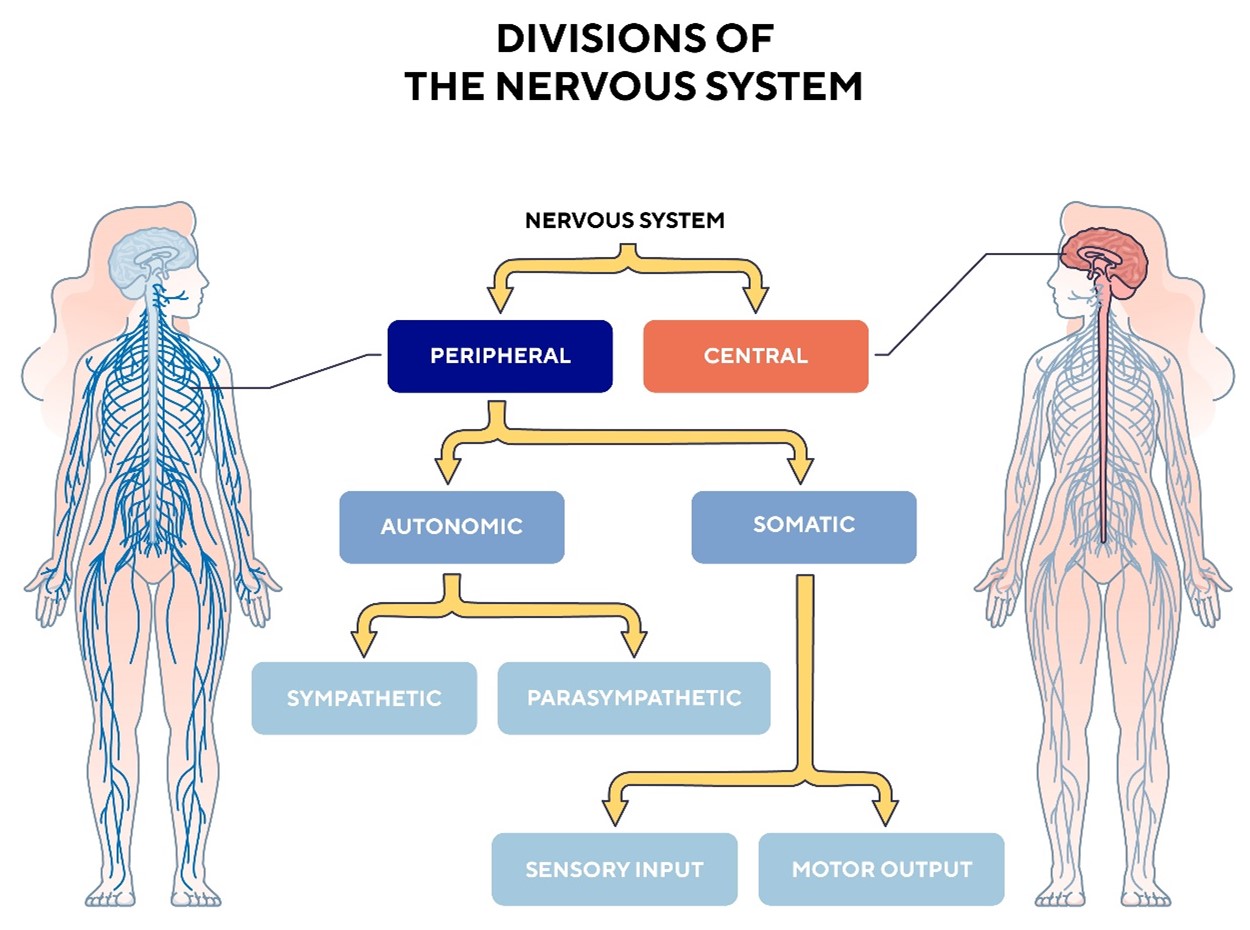Understanding the nervous system

What is the nervous system and what does it do?
The nervous system is our body's regulatory and communication centre. It is made up of the brain, the spinal cord and nerves (a collection of neurons). The brain is a bit like our body's control tower: it needs to be kept rapidly informed of the body's needs and the resources available in the environment to satisfy it. Using sensory receptors, it receives information about changes occurring both inside and outside the body. This information is transmitted via nerves (which are like a vast network of cables that run throughout the body) to the spinal cord and the brain, which acts as a command centre, processing the information and deciding whether to take action.
The neuron, the unit of the nervous system
The functioning of the nervous system is based on the circulation of information along chains of neurons. A neuron is a cell specialised in the reception, propagation and transmission of nerve messages. It is made up of dendrites, a cell body and an axon2. Messages from the nervous system travel through neurons in the form of electrical signals. A myelin sheath surrounds certain axons, increasing the speed at which information travels. In multiple sclerosis (an autoimmune disease), the body's immune system attacks itself. This leads to the destruction of the myelin sheath which affects the transmission of these messages to muscles leading to different symptoms. For more information on MS, see our article "Multiple sclerosis and foot drop".
For a nerve impulse to pass from one neuron to another cell (another neuron or cells in an organ), the signal must pass through a junction called a synapse. Most synapses are chemical in nature. In other words, the electrical signal is transformed into a chemical signal. The neuron releases chemical substances called neurotransmitters, which allow the information to be passed on to the next cell 4.
Breakdown of the nervous system: central and peripheral.
The nervous system is divided into several sub-sections. The brain and spinal cord make up the central nervous system (CNS) 3, and are the control centre, processing information and sending orders back.
The rest of the nervous tissue makes up the peripheral nervous system (PNS). They represent the pathways that carry incoming and outgoing signals.
The PNS is subdivided into several parts:
The somatic nervous system is made up of sensory and motor nerves.
- Sensory nerves carry information to the CNS from sensory receptors throughout the body (e.g. olfactory nerves for smell, optic nerves for sight, etc.). ).
- Motor nerves communicate only voluntary action information from the brain or spinal cord to the muscles that move our body.
The autonomic nervous system is made up of neurons that connect the CNS with the internal organs. It deals with unconscious or involuntary activity. It is divided into two parts.
- The sympathetic nervous system, which mobilises the body's energy and resources in the event of stress or excitement (prepares us for activity).
- The parasympathetic nervous system conserves energy and resources in a relaxed state or during sleep (general slowing down of the body's functions).

Sources :
- Anatomie et physiologie humaines, 2e édition, Édition du Renouveau pédagogique inc. - E. N. Marieb adaptation française de René Lachaîne - Saint-Laurent, Québec - 1999 - ISBN : 2-7613-1053-5
- Anatomy and Physiology. Seventhedition.MosbyElsevier - Kevin T. Patton, Gary A. Thibodeau - Missouri - 2010 – ISBN: 9780323055321
- Nervous system: part 1. Nurs Stand. - Farley A, Johnstone C, Hendry C, McLafferty E. - 2014 Apr 2 - PMID: 24689422 DOI: 10.7748/ns2014.04.28.31.46.e7004
- 35.2 How Neurons Communicate OpenStax CNX - Openstax College, Biology – Last modified February 29, 2016 - http://cnx.org/contents/GFy_h8cu@10.4:cs_PbGW@5/How-Neurons-Communicate.